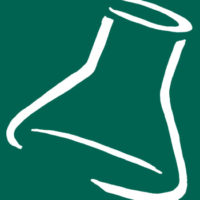All too often we pick up a copy of a code, regulation or guideline, such as the Food Code or Current Good Manufacturing Practices (cGMPs), and immediately turn to the section that provides an interpretation of that code or rule that may help us to understand a specific application. Unfortunately, we hardly ever look at its introduction. In fact, I think it’s a truism that most of us don’t bother with intros, forwards or prefaces, even in our recreational reading. Rather, we immediately turn to Chapter One and begin.
The introduction and forward are usually the last things an author completes in any written opus. After all the work is done, the author takes time in the forward or preface to thank those individuals and institutions who helped provide the necessary inspiration and perspiration in seeing the work to completion. In the introduction, the reader is provided with some historical insight into the origin and reason for the work’s existence. But more importantly, it is in the introduction where the reader learns what information to expect between the covers.
This is the case with the long-awaited publication of the 2005 Food Code. In its introduction we are told how the regulations are to be used and the anticipated outcomes from their application. The introduction to this latest Food Code contains three simple declarative sentences that summarize these ideas and places them squarely in the context of preventing foodborne illnesses from foodservice and food retail operations:
“The 2005 FDA Food Code is a model food safety guideline for retail food operations and institutions. As such, this model food safety guideline is designed as a reference document for the regulatory and retail food industries. It assists food protection jurisdictions at all levels of government by providing them with a scientifically sound technical and legal basis for regulating the retail and food service segment of the industry. This edition of the Food Code provides practical, science-based guidance and manageable, enforceable provisions for mitigating risk factors known to cause foodborne illness.”
The forward also gives credit to all the conscientious and hard-working food safety professionals associated with the Conference for Food Protection, the Centers for Disease Control and Prevention (CDC), and the U.S. Department of Agriculture (USDA) in collaboration with the U.S. Food and Drug Administration (FDA) for their collective efforts in updating the current Food Code. It goes on to explain that this iteration is a compilation of current science and information on emerging food safety issues and imminent health hazards related to food safety.
In fact, if one thing is made clear, the 2005 Food Code, as with the previous versions, is the single document we use as food safety professionals that has the greatest input by all industry stakeholders. Each section and the subsequent recommendations are crafted on a scientifically sound technical and legal basis. In so doing, the updaters have achieved their purpose, providing model rules that are consistent with national food regulatory policies and that promote uniformity in the application of best practice standards.
The 2005 Food Code is a significantly updated version, and the changes will ultimately and profoundly affect the way in which the retail food and regulatory sectors interact. If I read it correctly, its interpretation will require even greater reliance on risk-based inspections, which is a most welcome direction. Its successful nationwide adoption, therefore, will involve specialized training, commensurate with a significant increased need in the regulatory workforce. But first we must read on, past the introduction that tells us what to expect to the heart of the document that defines the expectations.
Highlights of the Update
Because the new Food Code is a model, not all regulatory agencies will adopt the changes therein. We have all learned from experience that the decision to change is slow and the implementation of change is even slower. However, like it or not, the Code contains some new language that ultimately will be used by my fellow professionals in the public health arena as guidelines for meeting current inspection goals. I refer in particular to three sections: 1) the broadened definition of potentially hazardous food (PHF) that includes two pH and water activity (aw) interaction tables, which require time/temperature control for safety to limit pathogenic microorganism growth or toxin formation; 2) information about major food allergens consistent with the Food Allergen Labeling and Consumer Protection Act of 2004; and 3) amended date marking practices for consistency with recommendations in the FDA Listeria monocytogenes Risk Assessment.
The first section will most assuredly affect how sanitarians, inspectors and foodservice establishments conduct business. Measuring the broader definition of PHFs will require additional instrumentation and training. While I have heard it argued that the responsibility to demonstrate the water activity and pH of certain foods rests with the retail food operator, I contend that it is the sanitarian’s responsibility to validate these claims using a water activity meter and some method or device to measure pH; much in the same way that we already validate time and temperature through the use of a watch and an arsenal of thermometers. In the absence of any field validation this section will be, in all probability, unenforceable. I therefore urge all health departments to begin the budget process to obtain the funding for the necessary equipment and training.
The latter two sections concerning allergen information (targeting milk, egg, fish, crustacean shellfish, tree nuts, wheat, peanuts, and soybeans, or a food ingredient that contains protein derived from one of these foods) and date marking of “high-risk” foods to prevent Listeria infections do not present significant compliance or enforcement problems and are easily evaluated in the field. The FALCPA law specifically defines the allergens that must be included on food labels, under what circumstances these must be listed and how they must appear on the label, and requires that the labeling language be in plain English. Compliance with these mandates can be visually confirmed by the inspector.
Similarly, date marking, defined in the Food Code as “the practice of indicating the date or day by which a ready-to-eat PHF should be consumed, sold, or discarded,” has been reevaluated and focuses on high risk foods rather than foods that present a low risk of Listeria contamination. The 2005 Food Code now specifically exempts two types of processed food products due to scientific evidence that these are low-risk items for Listeria monocytogenes contamination. Exempted from date marking are deli salads—ham, chicken, egg, seafood, pasta, potato, and macaroni—that are prepared and packaged in a food processing plant because they contain adequate acidity and preservatives to prevent the growth of Listeria monocytogenes, and cultured dairy products and certain types of processed cheeses because they contain organic acids, preservatives, competing microorganisms, pH, water activity, or salt concentration that control the growth of of the pathogen. With some good working knowledge of the products identified by FDA’s risk assessment as “high risk,” inspectors will find compliance to be relatively easy to evaluate in the field.
The new Food Code also clarifies criteria for reporting, restriction, exclusion and returning to work. Chapter 2 better describes the “conditional employee” with reference to becoming a “food employee” once the applicant is in compliance with the employee health provisions of the Code. These regulations will metamorphose the routine inspection into a quasi-audit. It will require a document review of some type and an evaluation of one or more aspects of the operator’s administrative processes.
The section we have long wished for and awaited with anxious anticipation is finally a reality, as well. Handwashing is amended to update the proper sequence for the handwashing procedure and and centers on prevention practices to avoid recontamination of the hands. The procedures detailed in the 2005 Food Code are more consistent with the recommendations in the CDC’s Hygienic Practice Guidelines for Health Care Workers. The new handwashing procedural details give the sanitarian an opportunity for education and demonstration at each visit to a facility. Moreover, this section provides direction to ultimately “institutionalize” handwashing at each retail establishment.
The new Food Code also deals with several criteria that were not quite clarified in previous issues and often have been an area of questions and concerns by the regulatory community. The best gift this Code has given to the regulatory industry is the words “time” and “temperature” used in the same sentence. In the future, this change will make risk-based criteria inspections more inclusive and far more comprehensive (heretofore, those of us in institutional practice most often relied on case law for enforcement).
Another welcome change is the procedures described for reduced oxygen packaging, which address Listeria monocytogenes and Clostridium botulinum. The 2005 Food Code also amends the procedures to require specific temperature and other controls for cook-chill and sous vide packages. In the past, these packaging methodologies always raised questions and concerns during inspections. For many sanitarians, when faced with these gray areas, they have relied on more traditional and redundant controls to the economic detriment of the operators.
Finally, the new Code clarifies several issues that have also been the cause of some vexation during routine inspections. These include the definition of “juice” and the impact of that amendment for food operations at the retail level; a clarification of the difference between shell eggs and egg product; an interpretation of the intent of commingling shellstock that were harvested in the same growing area on the same harvest date by the same certified shellfish shipper; and updated information on the use of hand antiseptics.
A Downloadable Page-Turner
This is just a small sampling of the many changes in the 2005 Food Code and their potential impact on the regulatory community. But it does not stop there. In the annexes you will find several excellent references on conducting inspections, food security, managerial controls, and updated and new versions of forms, guides, lists and charts to make the sanitarian’s work a bit easier, just to name a few.
According to FDA, 48 of 56 U.S. states and territories representing 79% of the U.S. population have adopted some version of the Food Code since the 1993 edition. My prediction is that the updated 2005 edition of the Food Code will surpass that percentage of adoptees. Speaking as one appreciative sanitarian: To all the professionals responsible for the 2005 Food Code, thank you. And to all of our Food Safety Magazine readers looking for a page-turner with substance, visit www.cfsan.fda.gov/~dms/fc05-toc.html to download the 2005 Food Code in Adobe PDF format.
Forensic sanitarian Robert W. Powitz, Ph.D., MPH, RS, CFSP, is principal consultant and technical director of Old Saybrook, CT-based R.W. Powitz & Associates, a professional corporation of forensic sanitarians who specialize in environmental and public health litigation support services to law firms, insurance companies, governmental agencies and industry. For more than 12 years, he was the Director of Environmental Health and Safety for Wayne State University in Detroit, MI, where he continues to hold the academic rank of adjunct professor in the College of Engineering. He also served as Director of Biological Safety and Environment for the U.S. Department of Agriculture at the Plum Island Animal Disease Center at Greenport, NY.
He is the first to hold the title of Diplomate Laureate in the American Academy of Sanitarians, and also is a Diplomate in the American Academy of Certified Consultants and Experts and with the American Board of Forensic Engineering and Technology.
Dr. Powitz welcomes reader questions and queries for discussion in upcoming Sanitarian’s File columns, and feedback or suggestions for topics you’d like to see covered in upcoming issues of Food Safety Magazine can be sent to him directly at sanitarian@juno.com or through his website at www.sanitarian.com.
The 2005 Food Code: A Regulator’s Reading and Perspective




